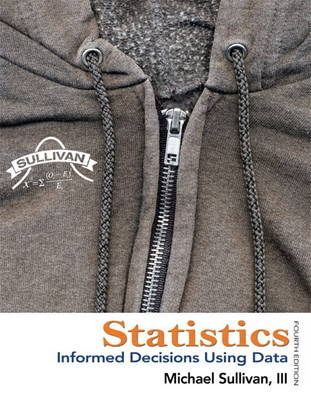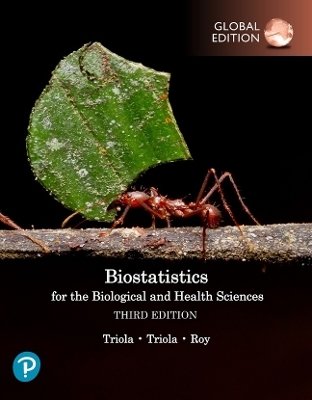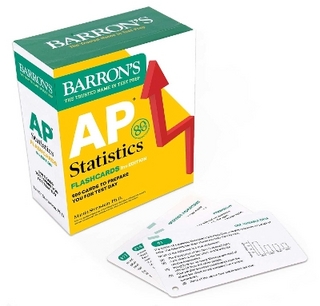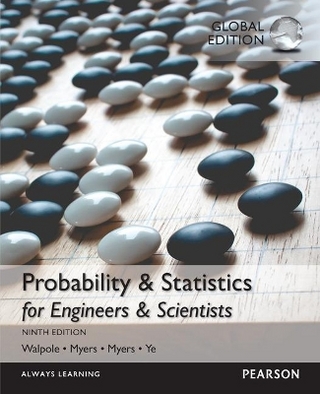
Statistics
Pearson
978-0-321-75727-2 (ISBN)
- Titel erscheint in neuer Auflage
- Artikel merken
This book follows the Guidelines for Assessment and Instruction in Statistics Education (GAISE), as recommended by the American Statistical Association, and emphasizes statistical literacy, use of real data and technology, conceptual understanding, and active learning.
With training in mathematics, statistics, and economics, Mike Sullivan, III has a varied teaching background that includes 15 years of instruction in both high school and college-level mathematics. He is currently a full-time professor of mathematics and statistics at Joliet Junior College. Mike has numerous textbooks in publication in addition to his Introductory Statistics Series, which include a Developmental Math series, and a Precalculus series, which he writes with his father, Michael Sullivan. Mike has built this book in the classroom using feedback from his students. He is well aware of the challenges of students taking an introductory statistics course. His goal is for students to be more informed interpreters of data, so that they will be better decision makers and have stronger critical-thinking skills. When not in the classroom or writing, Michael enjoys spending time with his three children, Michael, Kevin, and Marissa, and playing golf.
Part I: Getting the Information You Need
Chapter 1 Data Collection
1.1 Introduction to the Practice of Statistics
1.2 Observational Studies and Experiments
1.3 Simple Random Sampling
1.4 Other Effective Sampling Methods
1.5 Bias in Sampling
1.6 The Design of Experiments
Chapter Review
Chapter Test
Making an Informed Decision: What College Should I Attend?
Case Study: Chrysalises for Cash
Part II: Descriptive Statistics
Chapter 2 Creating Tables and Drawing Pictures of Data
2.1 Organizing Qualitative Data
2.2 Organizing Quantitative Data: The Population Displays
2.3 Additional Displays of Quantitative Data
2.4 Graphical Misrepresentations of Data
Chapter Review
Chapter Test
Making an Informed Decision: Tables or Graphs?
Case Study: The Day the Sky Roared
Chapter 3 Numerically Summarizing Data
3.1 Measures of Central Tendency
3.2 Measures of Dispersion
3.3 Measures of Central Tendency and Dispersion from Grouped Data
3.4 Measures of Position and Outliers
3.5 The Five-Number Summary and Boxplots
Chapter Review
Chapter Test
Making an Informed Decision: What Car Should I Buy?
Case Study: Who Was "A Mourner"?
Chapter 4 Describing the Relation Between Two Variables
4.1 Scatter Diagrams and Correlation
4.2 Least-Squares Regression
4.3 Diagnostics on the Least-Squares Regression Line
4.4 Contingency Tables and Association
4.5 Nonlinear Regression: Transformations (on CD)
Chapter Review
Chapter Test
Making an Informed Decision: Relationships of Variables on a World Scale
Case Study: Thomas Malthus, Population, and Subsistence
Part III: Probability and Probability Distributions
Chapter 5 Probability
5.1 Probability Rules
5.2 The Addition Rule and Complements
5.3 Independence and the Multiplication Rule
5.4 Conditional Probability and the General Multiplication Rule
5.5 Counting Techniques
5.6 Putting It Together: Probability
5.7 Bayes's Rule (on CD)
Chapter Review
Chapter Test
Making an Informed Decision: The Effects of Drinking and Driving
Case Study: The Case of the Body in the Bag
Chapter 6 Discrete Probability Distributions
6.1 Discrete Random Variables
6.2 The Binomial Probability Distribution
6.3 The Poisson Probability Distribution
6.4 The Hypergeometric Probability Distribution (on CD)
Chapter Review
Chapter Test
Making an Informed Decision: Should We Convict?
Case Study: The Voyage of the St. Andrew
Chapter 7 The Normal Probability Distribution
7.1 Properties of the Normal Distribution
7.2 Applications of the Normal Distribution
7.3 Assessing Normality
7.4 The Normal Approximation to the Binomial Probability Distribution
Chapter Review
Chapter Test
Making an Informed Decision: Stock Picking
Case Study: A Tale of Blood, Chemistry, and Health
Part IV: Inferences - From Samples to Population
Chapter 8 Sampling Distributions
8.1 Distribution of the Sample Mean
8.2 Distribution of the Sample Proportion
Chapter Review
Chapter Test
Making an Informed Decision: How Much Time Do You Spend in a Day?
Case Study: Sampling Distribution of the Median
Chapter 9 Estimating the Value of a Parameter Using Confidence Intervals
9.1 Estimating a Population Proportion
9.2 Estimating a Population Mean
9.3 Confidence Intervals for a Population Standard Deviation
9.4 Putting It Together: Which Procedure Do I Use?
9.5 Estimating with Bootstrapping (NEW)
Chapter Review
Chapter Test
Making an Informed Decision: How Much Should I Spend for this House?
Case Study: Fire-Safe Cigarettes
Chapter 10 Hypothesis Tests Regarding a Parameter
10.1 The Language of Hypothesis Testing
10.2 Hypothesis Tests for a Population Proportion
10.3 Hypothesis Tests for a Population Mean
10.4 Hypothesis Tests for a Population Standard Deviation
10.5 Putting It Together: Which Method Do I Use?
10.6 The Probability of a Type II Error and the Power of the Test
Chapter Review
Chapter Test
Making an Informed Decision: Selecting a Mutual Fund
Case Study: How Old Is Stonehenge?
Chapter 11 Inference on Two Samples
11.1 Inference about Two Proportions
11.2 Inference about Two Means: Dependent Samples
11.3 Inference about Two Means: Independent Samples
11.4 Inference about Two Standard Deviations
11.5 Putting It Together: Which Method Do I Use?
Chapter Review
Chapter Test
Making an Informed Decision: Which Car Should I Buy?
Case Study: Control in the Design of Experiment
Chapter 12 Inference on Categorical Data
12.1 Goodness of Fit Test
12.2 Tests for Independence and the Homogeneity of Proportions
Chapter Review
Chapter Test
Making an Informed Decision: Benefits of College
Case Study: Feeling Lucky? Well, Are You?
Chapter 13 Comparing Three or More Means
13.1 Comparing Three or More Means (One-Way Analysis of Variance)
13.2 Post-Hoc Tests on One-Way Analysis of Variance
13.3 The Randomized Complete Block Design
13.4 Two-Way Analysis of Variance
Chapter Review
Chapter Test
Making an Informed Decision: Where Should I Invest? Part II
Case Study: Hat Size and Intelligence
Chapter 14 Inference of the Least-Squares Regression Model and Multiple
Regression
14.1 Testing the Significance of the Least-Squares Regression Model
14.2 Confidence and Prediction Intervals
14.3 Multiple Regression
Chapter Review
Chapter Test
Making an Informed Decision: Buying a Home
Case Study: Housing Boom
Chapter 15 Nonparametric Statistics
15.1 An Overview of Nonparametric Statistics
15.2 Runs Test for Randomness
15.3 Inferences about Measures of Central Tendency
15.4 Inferences about the Difference between Two Medians: Dependent Samples
15.5 Inferences about the Difference between Two Medians: Independent
Samples
15.6 Spearman's Rank-Correlation Test
15.7 Kruskal-Wallis Test
Chapter Review
Chapter Test
Making an Informed Decision: Where Should I Live?
Case Study: Evaluating Alabama's 1891 House Bill 504
Appendix A Tables
Appendix B Lines (on CD)
Answers
Index
| Sprache | englisch |
|---|---|
| Maße | 223 x 284 mm |
| Gewicht | 2150 g |
| Themenwelt | Mathematik / Informatik ► Mathematik ► Statistik |
| ISBN-10 | 0-321-75727-0 / 0321757270 |
| ISBN-13 | 978-0-321-75727-2 / 9780321757272 |
| Zustand | Neuware |
| Informationen gemäß Produktsicherheitsverordnung (GPSR) | |
| Haben Sie eine Frage zum Produkt? |
aus dem Bereich



